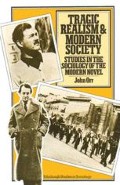Abstract
The story goes that in Madrid in 1937, Ernest Hemingway and Andre Malraux agreed, half in jest, to write novels about different periods of the Spanish Civil War. This is in fact what happened. Malraux’s novel Days of Hope, which he finished in the same year, ends with the defeat of the Italians at Guadalajara in March 1937. Hemingway’s For Whom the Bell Tolls, however, is set only two months later in the last week of May.1 While Malraux attempts to give a panoramic picture of the whole of that early part of the war from the first day of the military rebellion, Hemingway’s novel covers only three days out of the whole of the war. Malraux had dashed back to Paris to write his novel in the hope that the war might be won. When Hemingway began his novel in March 1939, the cause was already lost. Difference in the time of writing and difference in the scale of writing are both crucial in evaluating their respective novels. Malraux’s diffuse war-panorama and his glowing eulogy to human solidarity are indicative of his revolutionary optimism; Hemingway’s intensive focus and his feeling for the heroic in the midst of betrayal are indicative of tragic realism.
Access this chapter
Tax calculation will be finalised at checkout
Purchases are for personal use only
Preview
Unable to display preview. Download preview PDF.
Notes
Both novels are of direct historical interest for their recognisable portraits of leading Republican figures in the war. But one must not overlook the fictional dimensions of such portraits. To use Forster’s famous distinction, Malraux’s characterisations tend to be ‘flat’, while Hemingway’s, on the whole, are ‘round’. In Days of Hope Colonel Escobar of the Civil Guard in Barcelona was the model for Colonel Ximenez, while Enrico Lister was the model for Manuel. Hemingway, more intrigued by the personalities of the communists he met, provided the more controversial fictionalisation. Andre Massart is modelled on Andre Marty. General Golz is modelled on the military adviser to the International Brigades, Karol Swierczewski, code-named General Walter. It was Walter who, commanding the XIVth International Brigade, mounted the counter-offensive on the Segovia front described in the novel. Karkov, the Russian journalist, was modelled on Michael Koltsov, the Pravda correspondent who later perished in the Great Purge. There is some evidence to suggest that Koltsov was Stalin’s personal agent in Spain. See Hugh Thomas, The Spanish Civil War (London 1965), p. 336.
Mitchell, the British economist whom Karkov and Robert Jordan jointly ridicule as a self-important fellow-traveller with a ‘gueule de conspirateur\ could well be a malicious portrait of Malraux himself. See For Whom the Bell Tolls (London 1964), pp. 230–4.
Malraux’s claim to tragic humanism is scattered through numerous written articles and interviews. See G.D. Bland André Malraux: Tragic Humanist (Ohio 1963), P. 49ff.
Copyright information
© 1977 John Orr
About this chapter
Cite this chapter
Orr, J. (1977). Malraux and Hemingway: The Myth of Tragic Humanism. In: Tragic Realism and Modern Society. Edinburgh Studies in Sociology. Palgrave Macmillan, London. https://doi.org/10.1007/978-1-349-03004-0_11
Download citation
DOI: https://doi.org/10.1007/978-1-349-03004-0_11
Publisher Name: Palgrave Macmillan, London
Print ISBN: 978-1-349-03006-4
Online ISBN: 978-1-349-03004-0
eBook Packages: Palgrave Social & Cultural Studies CollectionSocial Sciences (R0)

